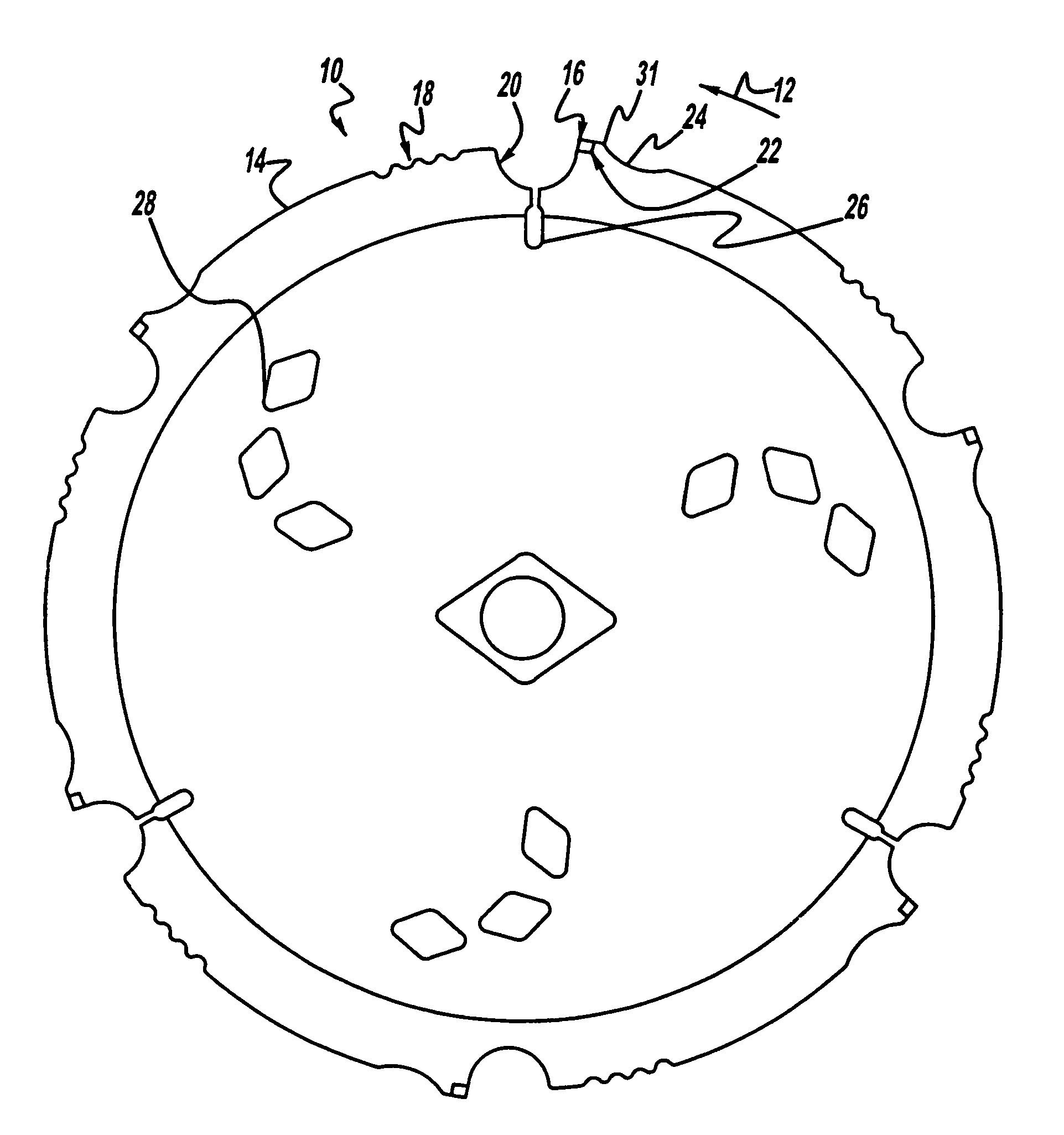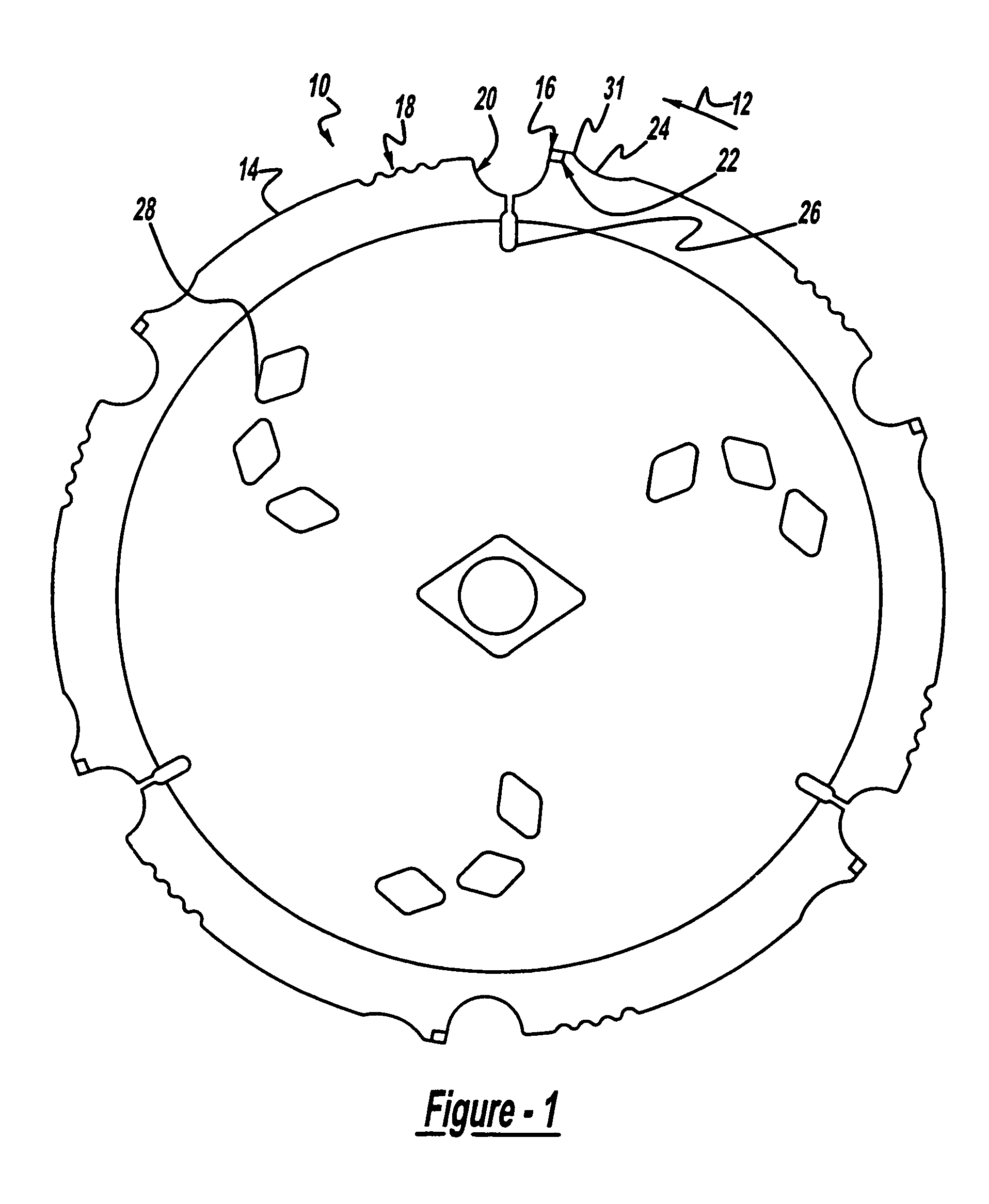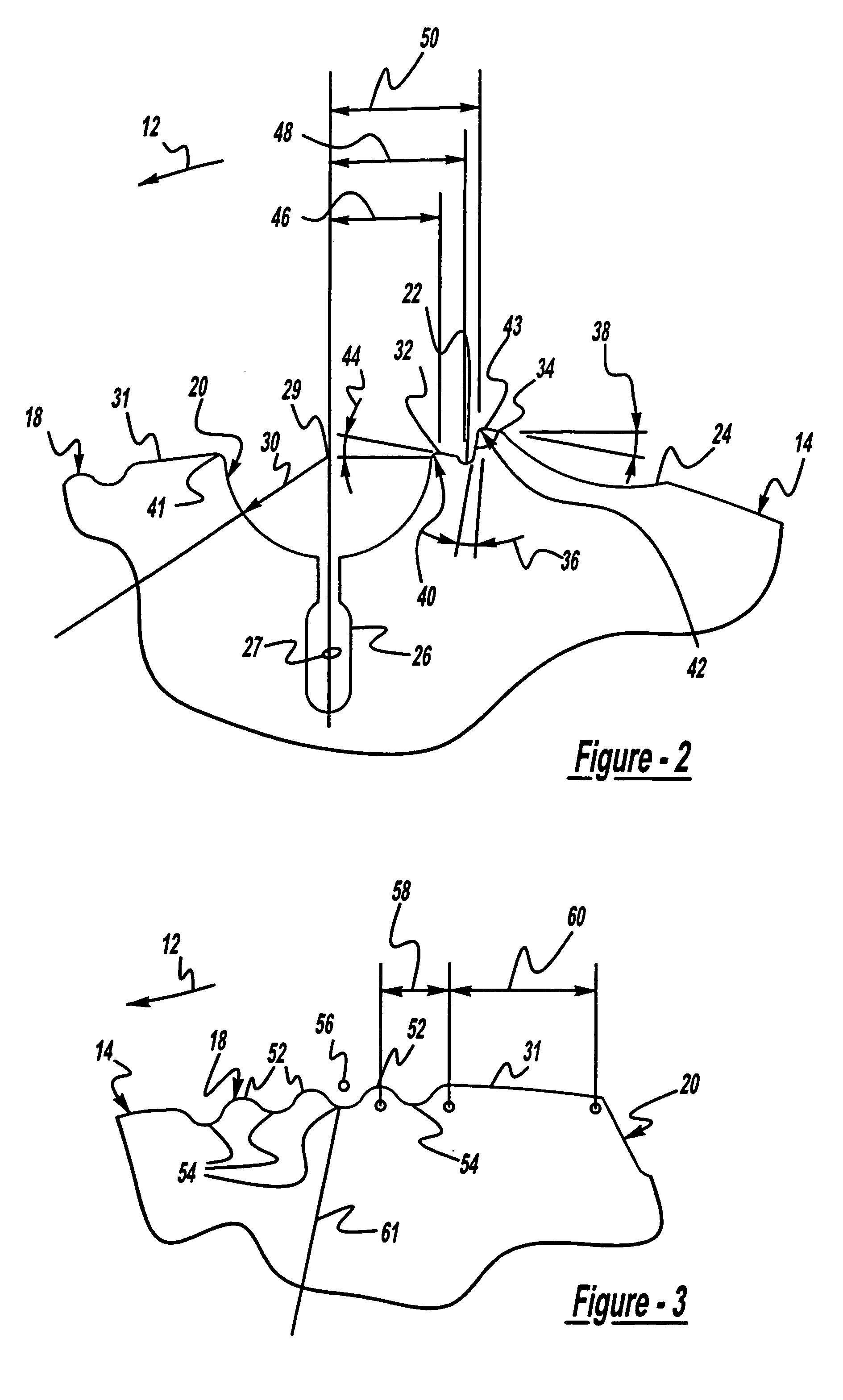Saw blade for cutting fiber cement
a technology of fiber cement and saw blades, which is applied in the direction of gear teeth, metal sawing tools, gear teeth, etc., can solve the problems of high cost, slow machining, and inability to “feel” right, so as to improve the quality of cutting in fiber cement workpieces, reduce the amount of chips and dust, and reduce the level of dust
- Summary
- Abstract
- Description
- Claims
- Application Information
AI Technical Summary
Benefits of technology
Problems solved by technology
Method used
Image
Examples
Embodiment Construction
[0027]Referring to FIG. 1, the saw blade of the present invention is referred to generally as 10. The saw blade 10 rotates in the direction shown by arrow 12 when mounted to a saw. The saw blade is formed of a steel plate or blank 14 on which is mounted a plurality of tips 16, where are formed of harder material, such as a fusion of PCD and tungsten carbide (hereinafter referred to as PCD / carbide). The thickness of the steel plate 14 is in the range of from 0.061 inches to 0.065 inches, with the preferred thickness being 0.063 inches. In the preferred embodiment of the circular saw blade 10 of the present invention, the blade itself is cut from sheet or plate steel by a laser process, and then the PCD / carbide tips 16 are brazed to the blade rim 31 in selected locations. Preceding the tip 16 in the direction of rotation 12, is a chip and dust limiter 18, immediately followed by a sweeping (relatively large diameter) gullet 20 for also removing dust. The rim is further formed with a d...
PUM
| Property | Measurement | Unit |
|---|---|---|
| radii | aaaaa | aaaaa |
| radii | aaaaa | aaaaa |
| tip hook angle | aaaaa | aaaaa |
Abstract
Description
Claims
Application Information
 Login to View More
Login to View More - R&D
- Intellectual Property
- Life Sciences
- Materials
- Tech Scout
- Unparalleled Data Quality
- Higher Quality Content
- 60% Fewer Hallucinations
Browse by: Latest US Patents, China's latest patents, Technical Efficacy Thesaurus, Application Domain, Technology Topic, Popular Technical Reports.
© 2025 PatSnap. All rights reserved.Legal|Privacy policy|Modern Slavery Act Transparency Statement|Sitemap|About US| Contact US: help@patsnap.com



